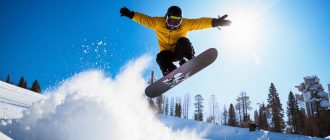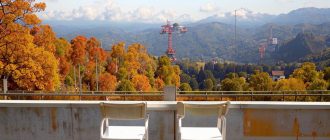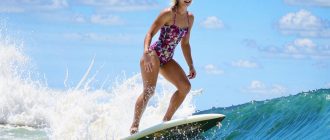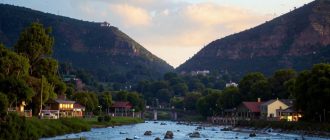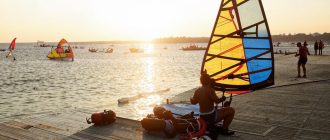Whatever you ride in the mountains, you need to be able to see where you are going. Otherwise, skiing will be uncomfortable and unsafe for you and others. With the seemingly objective importance of a ski mask, many riders and mountain lovers do not even think about its purchase. Or do not understand how to choose it correctly. Let’s find out, the question is relevant. Below you will find a lot of interesting things, get ready and be patient.
Basically we will use the enumeration of facts and nuances, so as not to clutter your head with unnecessary information and subtleties that are necessary for pro-riders at the world championships.
Why you need a mask
This question is most easily answered by a simple enumeration of commonly understood principles:
- facial safety. The mask protects the face from unexpected “dates” with branches, ice, wind and sports equipment during falls. Funny, but such cases are often found on the slope;
- eye protection from the sun. If suddenly you did not know, in the mountains lies snow, which has the ability to reflect the sun, which will negatively affect the eyes. Even with cloudy and gray weather, the percentage of ultraviolet light is not greatly reduced. The likelihood of getting a retinal burn will be reduced if you use a ski mask;
- improved visibility. Again, snow and ice have the ability to distort visibility, especially when on-piste or off-piste lighting is poor. You need to be alert at all times and read the smallest changes in terrain, elevation changes and react quickly to them.
What is important to consider when choosing
Everyone has the agony of choice: “Oh, I don’t like the color”, “Is there one just like it but with an aggressive design?”, “Is x-ray vision included in the price?”. Whatever the case, you will need to know the following before going to the store.
- Color and degree of darkening. Simply put, the color of the lens is in direct correlation with the weather, which can be surprising: in the morning – fog, in the afternoon – sun, in the evening – rain, and the next day – snowfall in general. In addition, the weather can change depending on the altitude. For example, at the top it’s sunny and below it’s foggy. You can also add the factor of lighting, which also plays an important role. In bad light everything around loses volume and contrast and becomes flat.
- The shape of the mask. We are all unique, and so are masks, but this does not prevent us from finding the perfect one. The mask itself should not be a large size, press on the cheekbones and must fit tightly to the face to avoid blowing wind, snow with vapor from your heavy breathing.
- Combination with a helmet. Now all “image makers” are invited to close the article. We are not going to talk about style here, but first of all about comfort. With an incomplete and loose fit of the helmet to the mask there will be discomfort, and you can also get damage. So the moment you go to the store, take your helmet with you. It’s a must.
With this simple information, it will be easier for you to navigate through the abundance of masks that can be found in any sports equipment store. And while we know the basics of the choice, it makes sense to dive deeper into each of the points.


Head of X-Camp Russia snowboarding school
“My first snowboard mask was from Von Zipper. I only remember that I got it at a big discount and it didn’t last long – literally in a year all the foam fell apart. So be sure to check the year of manufacture. If the mask has been stored for a long time and incorrectly, the foam insert can lose its properties.
For more than 10 years I’ve been using only Electric’s EG2 model, changing lenses and frames. I now have two frames, which usually last for three or four seasons, depending on use. I really dislike riding without a mask and always make sure I have one with me, and at least two lenses in case the weather changes. With the wrong lens it will be impossible to operate the mask. Also, in case of a fall, snow gets into the mask and it will not dry out in winter. Therefore, a replacement lens or a complete mask is the right solution to many problems.
Color and degree of darkening of the lens
Through a mask with a properly selected lens color, you will see the track more contrast, clearer in the shadows and depth of objects and get rid of reflected sun glare.
So, let’s get started:
- yellow filter. It increases contrast in cloudy weather. With it you can see well the shadowy parts of the track, and it also works well in flat and artificial light;
- orange filter. An alternative to yellow “colleagues”. Filters of this color are slightly darker and provide good perception not only in cloudy weather, but also in variable cloudiness. It is well suited for skiing conditions at resorts with altitudes not exceeding 1000 meters;
- pink filter. Conveys the volume of objects when skiing in overcast weather. Shadows and outlines of objects on the descent become clearer;
- gray filter. The color, according to the classics of the genre, is oriented only for riding in sunny weather. The main characteristic is that it simply dims the brightness. It is not recommended to use in poor lighting conditions;
- transparent. Used only for evening and night riding under artificial light.
Now it is worth paying attention to the mask’s transmittance, as this also has weight. In the pursuit of optimal terrain vision you can be helped by a simple trick – to slightly dim the sun, for which the “dimming” is invented. There is a special index called VLT (Visible Light Transmission), which is usually indicated as a percentage and divided into categories from 0 to 4, depending on the amount of light transmission.
To understand the transmittance is simple, write down the formula. The lower the percentage, the less light the mask transmits. And, accordingly, vice versa.
In addition to the VLT index, the mirror coatings on the outer surface of the lens are designed to combat excess sunlight. Their task is simple – to dampen light glare and add contrast to the relief.
Realizing that for a comfortable stay in the mountains and according to all the rules it will be necessary to have several separate masks, manufacturers began to produce masks that have a system of interchangeable lenses and the possibility of using special photochromic filters.

Mask shape
There is no mask that does not limit the angle of view by 100%. Because of this, brands and technologists are faced with the task of minimizing restrictions to the maximum. Today, there are many models available that give a wide view without distorting reality. Actually, the shape of the mask is primarily responsible for this. Of all the abundance, the following types can be distinguished.
- Spherical. The lens is bent in the horizontal and vertical planes, resembling part of a sphere. Lenses provide a wider angle of view, while having the same area as cylindrical lenses. They are virtually immune to optical distortion. A nice bonus of masks with spherical lenses is that they are less likely to fog up. The disadvantage of spherical lenses is their price due to the complexity of production technology. They are also highly susceptible to mechanical damage. Plus quite often a mask with a “convex” lens does not neighbor well with a classic helmet, but in the case of a “newstyle” helmet (with a visor) – well.
- Cylindrical. The lens is curved only horizontally. Outwardly have similarities with motocross ones, since they have a common origin. It costs less to produce such a mask, so the brands-manufacturers invest more in the design of the frame. This strategy allows them to create good optics at a reasonable price. Frames based on cylindrical masks are easier to dock with a helmet. Separately it is necessary to speak about disadvantages. The traditional problem is the distortion of the picture. Although in masks of the highest price segment this disadvantage is removed due to variable thickness of the lens itself. Let’s add that “cylinders” reflect and disperse the glare of the sun worse.
- Toric. Lenses tend to combine the advantages of cylinders and spheres: the mask has a strong bend in the horizon and conditional – vertically, which allows you to combine good visibility, resistance to fogging, not bad reflection of light glare and, what is nice, style. The price for such a mask will compete with the cost of top-level spheres.
To give an unambiguous answer to the question: “What shape is better to choose?” is not possible. First of all, the available budget for the purchase will help you decide, and after that – the pursuit of style.
Combination with a helmet
It can not be denied that the primary importance in such things is the quality of the lens itself, and after that – in everything else. At the same time, even the most technologically advanced ski mask may not suit you. In fact, it does not have to. Thus, it becomes clear that fitting is extremely important.
- Helmet and mask must be matched correctly. At the time of fitting, take the helmet with you and try everything on together. There should be no gaps or crevices between them. Don’t have a helmet? Then buy one first and then come for the mask afterward.
- In addition to the lack of “air” between the mask and the helmet, it should not be in contact with your face. Otherwise you will be overcome by wind, blinding sun and fogging of the inside of the lens.
- Lastly, evaluate the overall comfort. If you feel excessive pressure on your cheekbones, reduced breathing volume through the nose – the mask is anatomically unsuitable for you and you should look at other models.
Additional characteristics and properties of masks
Ski mask is now a high-tech element of equipment for winter sports. With this it is difficult not to agree with the above. At the same time, the “pluses” do not end, and there are several more that it makes sense to mention.
Polarization
The presence of this option has been appreciated by riders and mountain biking enthusiasts all over the planet. The polarizing property of the filter allows you to almost completely get rid of “parasitic” glare reflected from the snow. With polarization your eyes will not experience additional strain, and you will see the piste as well as possible.
Anti-fog and extra ventilation
If you are a regular visitor of ski resorts, you have definitely faced the situation when the mask starts to fog up when the temperature changes or warm air gets under it. Rest assured, the manufacturers are aware that this happens on a regular basis and try to deal with it in every way possible. For example, the use of dual lenses can reduce the percentage of fogging and improve moisture condensation. This has become something of a standard in the ski sports industry, and even in the budget segment of masks you can find this technology.
In addition to the double lenses in the creation of masks manufacturers equip products and additional ventilation, and also apply special anti-fog coatings, which are designed to fully protect the mask from fogging.

Ski mask for people wearing glasses
It would seem that wearing glasses can affect the choice of mask for skiing in the mountains. This is an obvious and logical question that can arise. If we believe the results of the Rosstat survey in 2020, about half of the adult population of Russia wears glasses or contact lenses. At the same time, men who wear glasses – 40.8%, and women – 56.7%.
Everyone who wears glasses should choose a mask among those models that were created for such an occasion. To make the search easier, masks are labeled with the abbreviation for Over the glasses – OTG.


